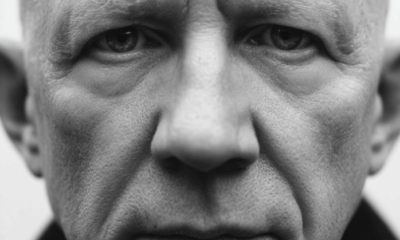Success Advice
A Better Framework to Make Smart Decisions

A perfectly good decision that seems like the most rational choice at the moment can turn out to be a disaster later. We aren’t intentionally stupid or try to make bad decisions. Most of the time we jump to a conclusion and stick to it because we lack a framework to make better decisions. We fail to realize that good decision-making simply boils down to eliminating bad choices and that requires asking good questions.
Making consistently high-quality decisions isn’t reserved for a few talented people who are born with the art of decision-making. It’s a skill that can be learned. Learning to ask the right questions will profoundly enhance the success of all your future decision-making by preventing you from making choices you end up regretting.
1. Am I stating the problem correctly?
How you frame the problem statement and what you wish to achieve from the decision can make all the difference. Stating the problem by assuming a certain solution, starting with assumptions, or missing the larger problem by trying to fix the symptoms will always lead to a wrong decision. Identify if your question is biased towards a specific solution or starts with certain assumptions. Make sure you are addressing the right problem.
2. Is this decision reversible or irreversible?
We make thousands of decisions throughout the day and not each one of our decisions deserves our equal attention. While low-consequence reversible decisions can be made real quick, it’s the high-consequence irreversible decisions that must be made with extra care.
Jeff Bezos explains this in his 2015 annual shareholder letter “Some decisions are consequential and irreversible or nearly irreversible – one-way doors – and these decisions must be made methodically, carefully, slowly, with great deliberation and consultation. If you walk through and don’t like what you see on the other side, you can’t get back to where you were before. We can call these Type 1 decisions. But most decisions aren’t like that – they are changeable, reversible – they’re two-way doors. If you’ve made a suboptimal Type 2 decision, you don’t have to live with the consequences for that long. You can reopen the door and go back through.”
Separate reversible from irreversible decisions to determine the process, time, energy, and strategy you need to apply to make that decision.
3. How important is this decision to me and why?
Knowing why the decision matters to you or how a wrong decision can impact you can be a powerful motivator to re-examine your process. It can make you look beyond obvious and easy options to the other choices that may seem hard at first but are more promising and better suited to your problem. Identify your stake in the decision and ask yourself why you really care about the right decision. Disconnect your identity from your idea and focus on actually making the right decision. Because what matters in the end is making the right decision and not you being right.
“Stay committed to your decisions, but stay flexible in your approach.” – Tony Robbins
4. What costs am I willing to pay to delay this decision?
Delaying decision-making is one of the most common tactics to avoid facing our real fears. Fear is a very real feeling and left unattended it can wreak havoc in our lives. Fear can make us imagine the worst possible scenarios that are highly unlikely and use them as an excuse for inaction.
Getting stuck with analysis-paralysis by looking up more and more information or avoiding the decision with the fear of making a wrong one can prevent you from grabbing the right opportunities at the right time. The cost of indecision is often higher than the cost of making a wrong decision.
Get rid of unwanted fears that might hold you back by defining them. Compare the cost of delaying the decision to the worst that can happen. Then, set yourself a reasonable date to make a decision and work backward from it to actually complete it in time.
5. What are the different alternatives?
With confirmation bias at play, we interpret and selectively gather data to fit our beliefs while rejecting other plausible alternatives. Asking this question sets the expectation that there’s more than one possible solution. It will open you to the idea of exploring alternative explanations.
Annie Duke, a former professional poker player and author of Thinking in Bets, writes in her book “What makes a decision great is not that it has a great outcome. A great decision is the result of a good process, and that process must include an attempt to accurately represent our own state of knowledge. That state of knowledge, in turn, is some variation of I’m not sure.”
Instead of trying to make a decision where you are 100% sure, embrace uncertainty. Evaluate different options based on the probability that a specific outcome will occur. Include others’ opinions. Your experience and knowledge of those around you will determine the accuracy of your evaluations.
6. How will this decision look in the future?
Most of the time we think just one step ahead and make a decision without evaluating the potential impact of our decision way into the future. We try to optimize for a small gain in the present while ignoring the potential downsides of this decision in the future.
By understanding the consequences of your decision, you can rid yourself of choices that you will regret later. By factoring your future into your decision process and visualizing how the decision will play out, you can avoid the avoidable.
Once you include these questions into your decision-making process, you will notice a tremendous improvement in the quality of your decisions. While mastering them and building upon them will take practice, noticing subtle changes in your thought process that these questions invoke will help you make even better decisions.
Life
10 Research-Backed Steps to Create Real Change This New Year
This New Year could finally be the one where you break old patterns and create real, lasting change.

Every New Year, we make plans and set goals, but often repeat old patterns. (more…)
Change Your Mindset
The Silent Skill That Makes People Respect You Instantly
What truly earns respect and why most people go about it the wrong way

Everybody craves respect but not everyone earns it. Some people believe that a title, years of experience, or a position of authority automatically entitles them to respect. (more…)
Entrepreneurs
The Essential Skills Every Entrepreneur Needs In 2026
Success in the digital age isn’t about luck. It’s about mastering the skills that separate dreamers from doers.

When I was 22 years old, I started my first side hustle as a ghostwriter. (more…)
Did You Know
The Success Patterns You Inherited (And Didn’t Notice)
Your family history may hold the key to why you think, act, and feel the way you do today.

Who are you? Your experiences and your family’s narratives and legacies contribute to your identity. Your ancestry contains individual traits and forces that have been inherited over the years. It also carries the fights and victories of your forebears and older family members. (more…)
-

 Personal Development4 weeks ago
Personal Development4 weeks agoThis Silent Habit Might Be Sabotaging Your Career
-

 Business4 weeks ago
Business4 weeks agoWhy Your E-Commerce Fulfilment Is Probably Broken (And How to Fix It)
-

 Shift Your Mindset3 weeks ago
Shift Your Mindset3 weeks ago11 E’s That Define Every Great Leader And Why Most People Miss Them
-

 Did You Know3 weeks ago
Did You Know3 weeks agoThe Success Patterns You Inherited (And Didn’t Notice)
-

 Business3 weeks ago
Business3 weeks agoThe Hidden Money Pit in Your Operations (and How to Use It)
-

 Entrepreneurs2 weeks ago
Entrepreneurs2 weeks agoThe Essential Skills Every Entrepreneur Needs In 2026
-

 Change Your Mindset2 weeks ago
Change Your Mindset2 weeks agoHow to Turn Your Mind Into Your Greatest Asset (Instead of Your Enemy)
-

 Change Your Mindset1 week ago
Change Your Mindset1 week agoThe Silent Skill That Makes People Respect You Instantly


























